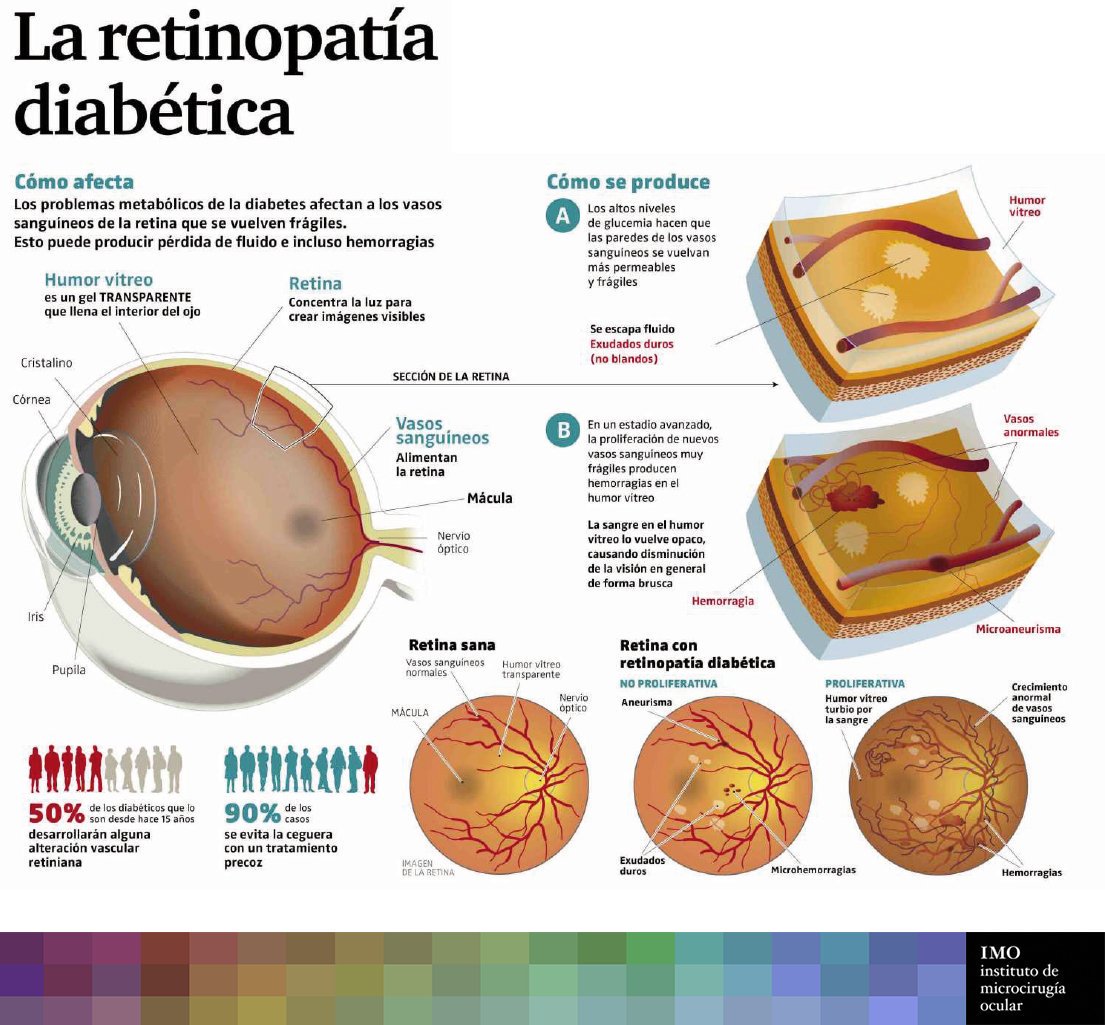Diabetes and vision: diabetic retinopathy
6 de November de 2014
Diabetic retinopathy, the main complication of diabetes, is the leading cause of irreversible blindness at a working age, but it is also avoidable, since severe vision loss can be prevented in most cases, if it is detected and treated at an early stage. Therefore, on the occasion of World Diabetes Day, which is celebrated on 14 November, IMO recalls some of the main keys to prevent this retinal disease linked to diabetes, whose patients are 25 times more likely to lose vision completely as compared to the rest of the population. Undergoing regular check-ups, keeping a strict metabolic control of the risk factors (blood sugar, blood pressure, etc.) and adopting healthy lifestyles are essential to hold off diabetes and slow down the progression of diabetic retinopathy, which is usually asymptomatic in its early stages. As the disease progresses, the following symptoms may occur:
- Blurred vision and gradual loss of visual acuity.
- Spots or floaters.
- Shadows or lost vision areas.
- Difficulties in night vision.
Any of these warning signs should lead us to see a specialist immediately, as early diagnosis will determine the degree of effectiveness of the treatment, which can be:
- Laser photocoagulation (when there is no bleeding in the vitreous humour).
- Intravitreal injections.
- Vitrectomy (when bleeding is severe and there is much blood in the vitreous space).
Alarming increase in diabetes The World Diabetes Day was established by the IDF and the World Health Organisation (WHO) in 1991 as a measure to try to respond to the alarming increase in diabetes cases throughout the world, and in 2007 the United Nations turned 14 November into an official health day. As stated on the IDF website, the purpose of World Diabetes Day is “to disseminate the causes, symptoms, treatment and complications associated with the disease.” This day reminds us that “the incidence of this serious condition is increasing, and this trend will continue, unless we take action now to prevent its huge growth.” Thus, while in 2011 it affected 366 million people worldwide, this figure is expected to increase to 552 million by 2030, according to the International Diabetes Federation (IDF). Graphics created by IMO Retina and Vitreous Department together with El Periódico

IMO Institute of Ocular Microsurgery
Josep María Lladó, 3
08035 Barcelona
Phone: (+34) 934 000 700
E-mail: international@imo.es
See map on Google Maps
By car
GPS navigator coordinates:
41º 24’ 38” N – 02º 07’ 29” E
Exit 7 of the Ronda de Dalt (mountain side). The clinic has a car park with more than 200 parking spaces.
By bus
Autobus H2: Rotonda de Bellesguard, parada 1540
Autobus 196: Josep Maria Lladó-Bellesguard, parada 3191
Autobuses H2, 123, 196: Ronda de Dalt – Bellesguard, parada 0071
How to arrive at IMO from:
IMO Madrid
C/ Valle de Pinares Llanos, 3
28035 Madrid
Phone: (+34) 910 783 783
See map in Google Maps
Public transport
Metro Lacoma (líne 7)
Autobuses:
- Lines 49 & 64, stop “Senda del Infante”
- Line N21, stop “Metro Lacoma”
Timetables
Patient care:
Monday to Friday, 8 a.m. to 9 p.m.
IMO Andorra
Av. de les Nacions Unides, 17
AD700 Escaldes-Engordany, Andorra
Phone: (+376) 688 55 44
See map in Google Maps
IMO Manresa
C/ Carrasco i Formiguera, 33 (Baixos)
08242 – Manresa
Tel: (+34) 938 749 160
See map in Google Maps
Public transport
FGC. Line R5 & R50 direction Manresa. Station/Stop: Baixador de Manresa
Timetables
Monday to Friday, 09:00 A.M – 07:00 PM




